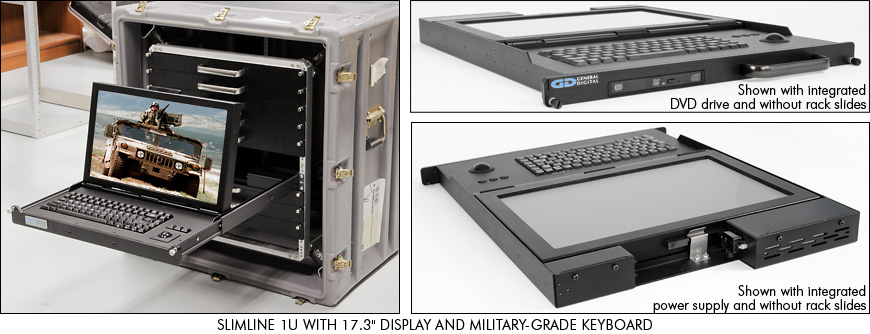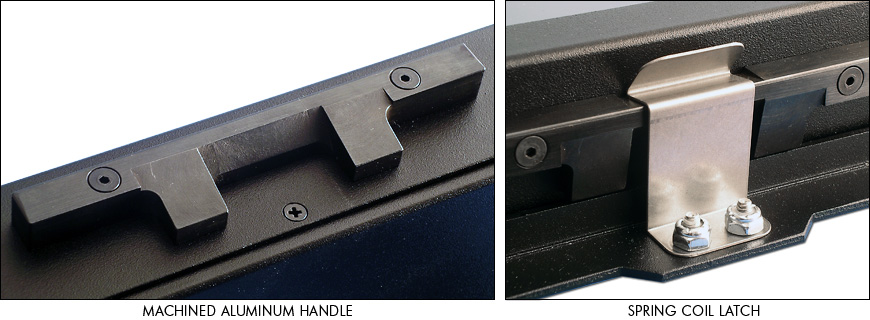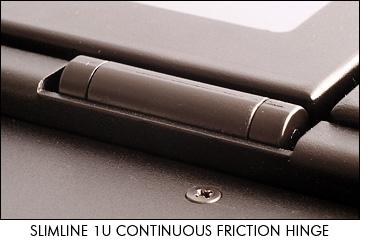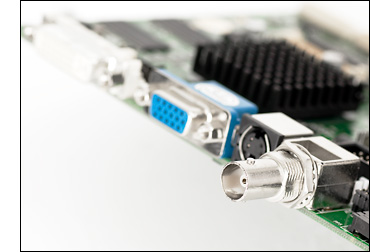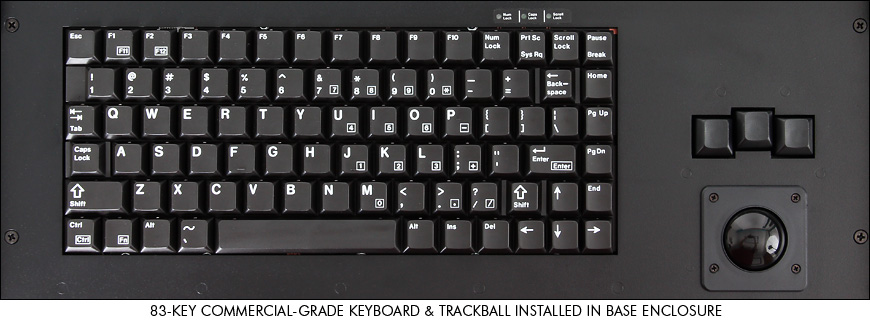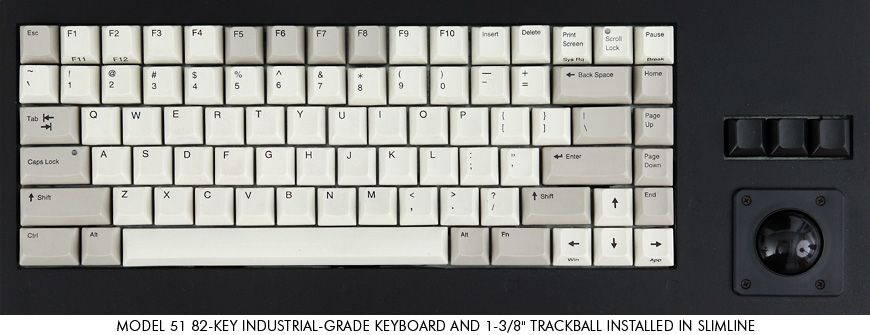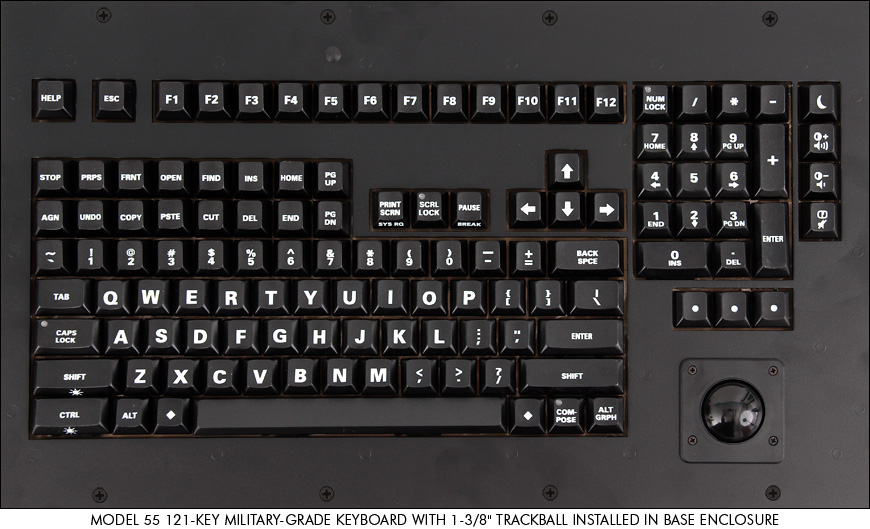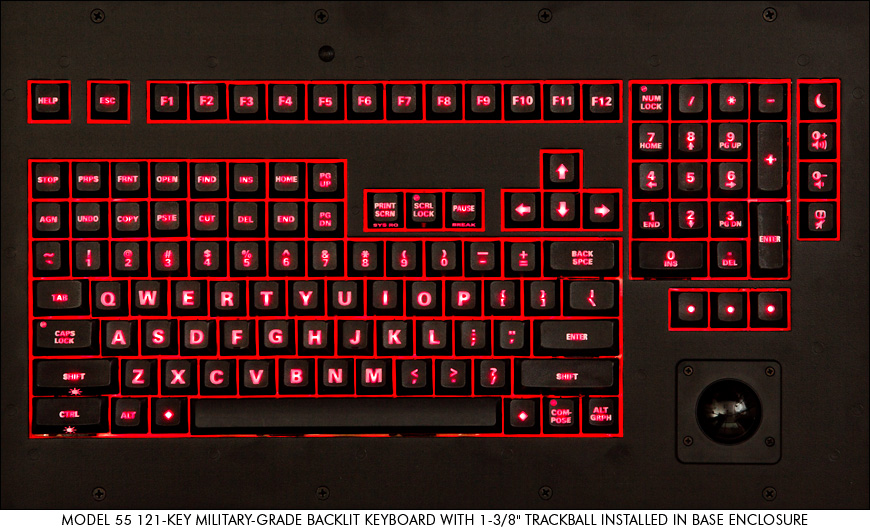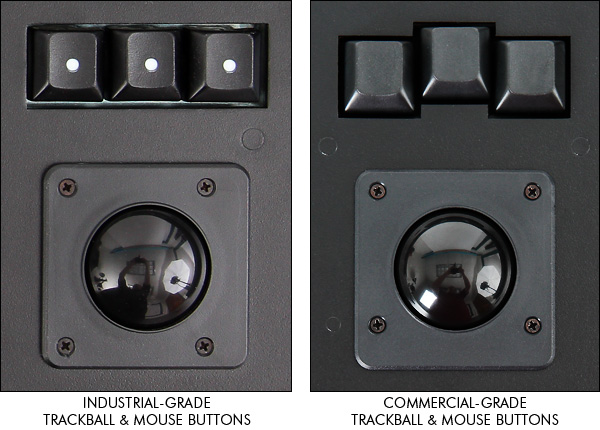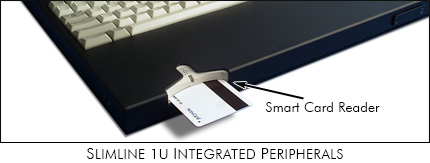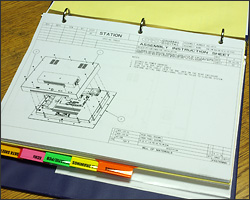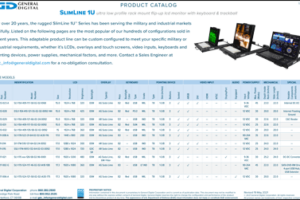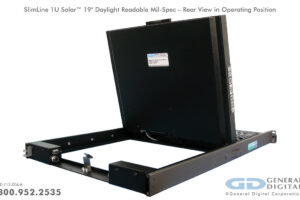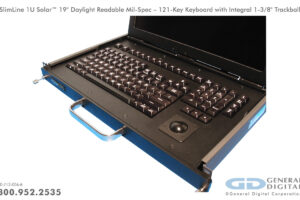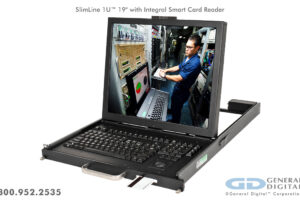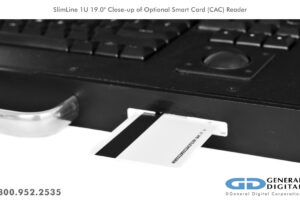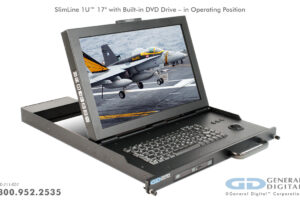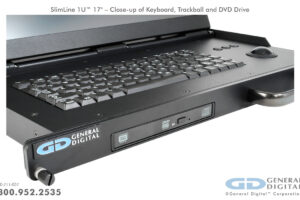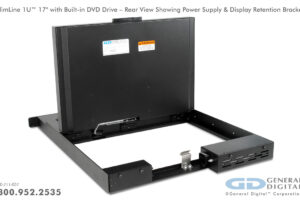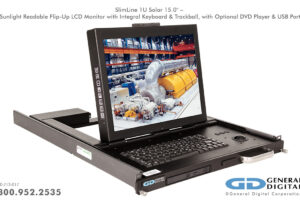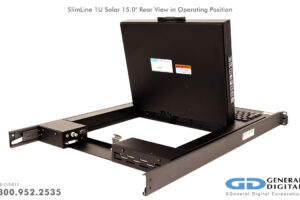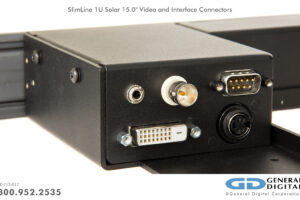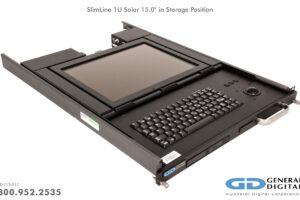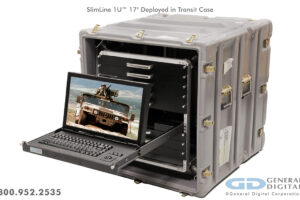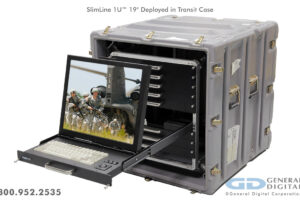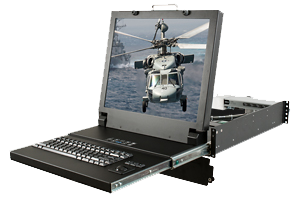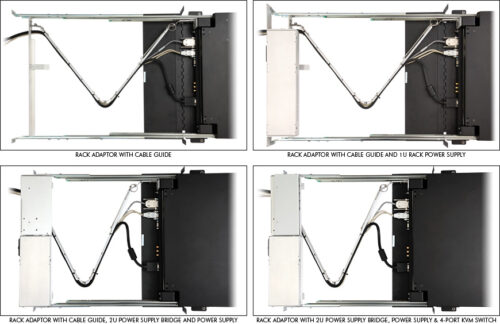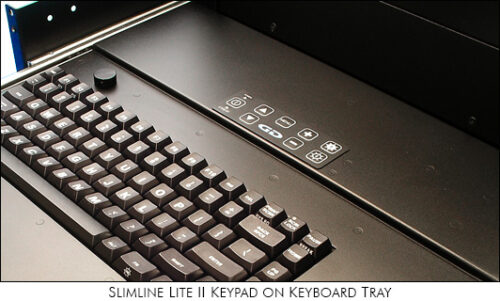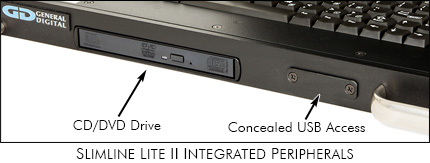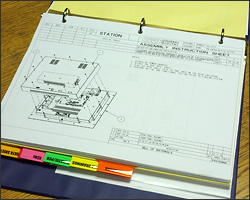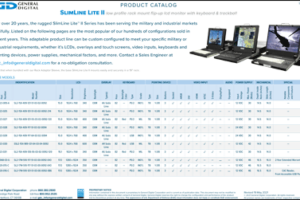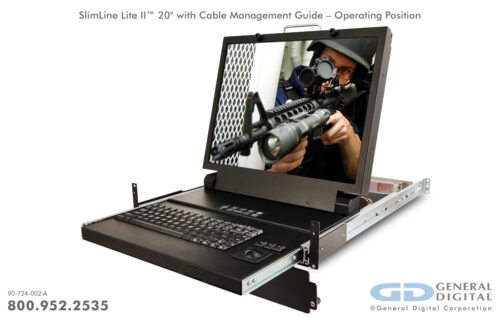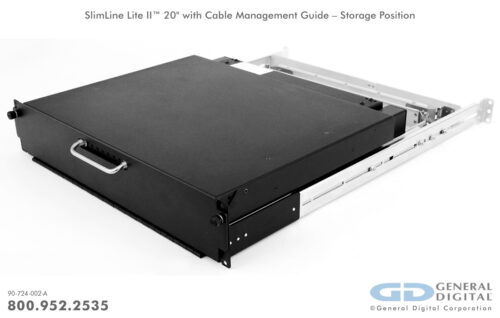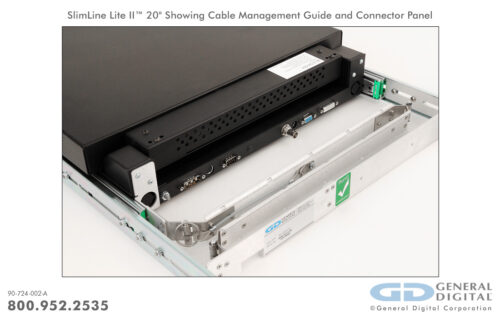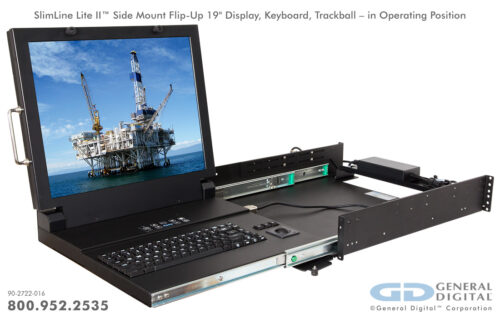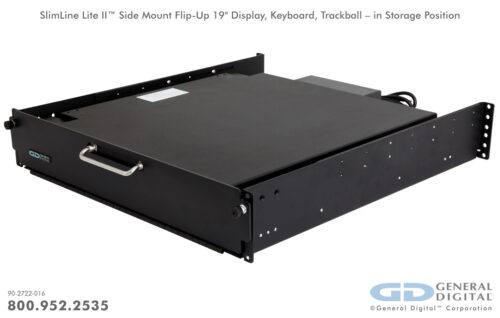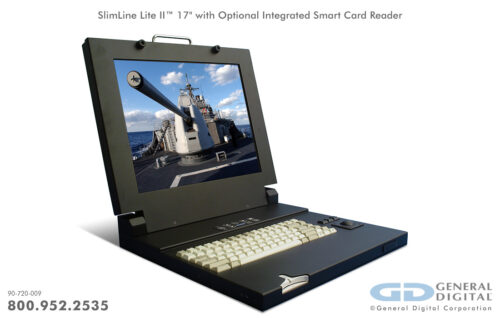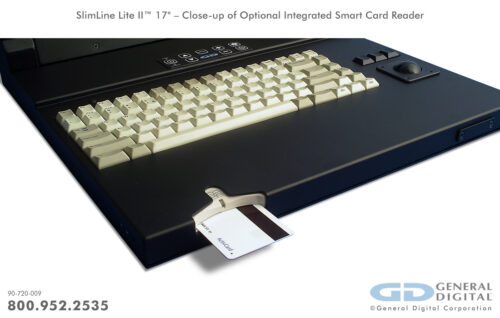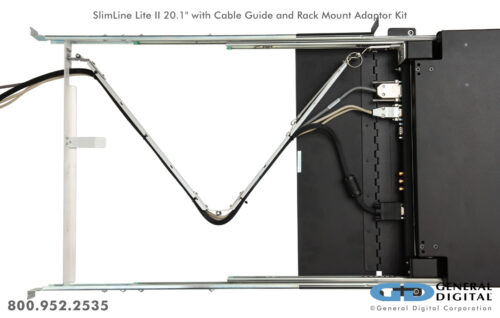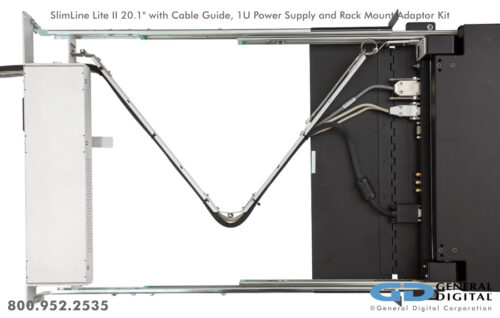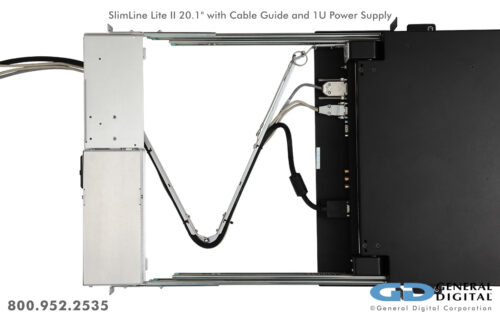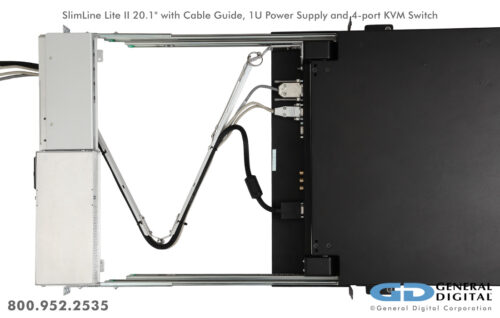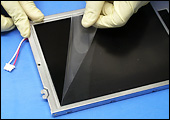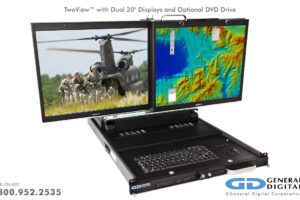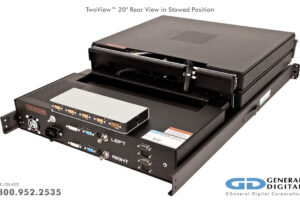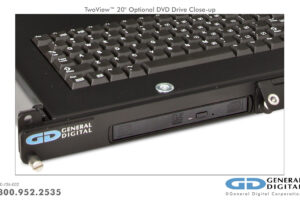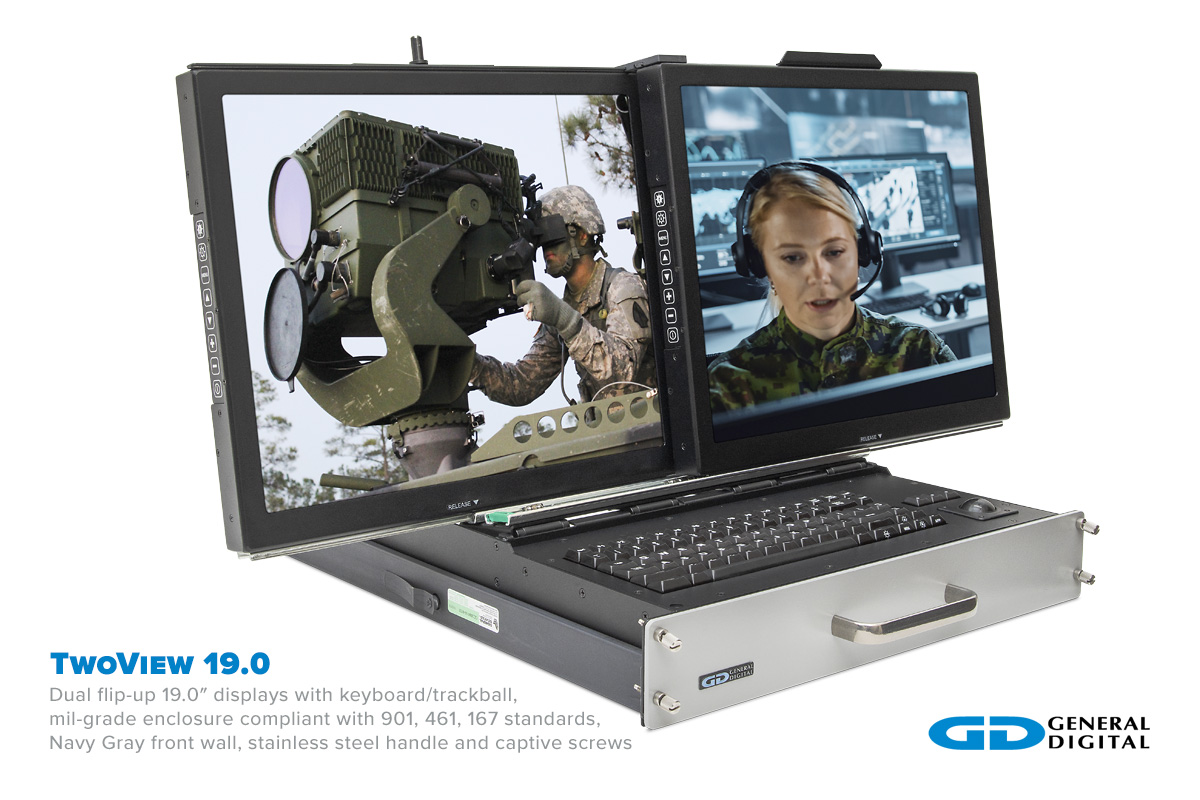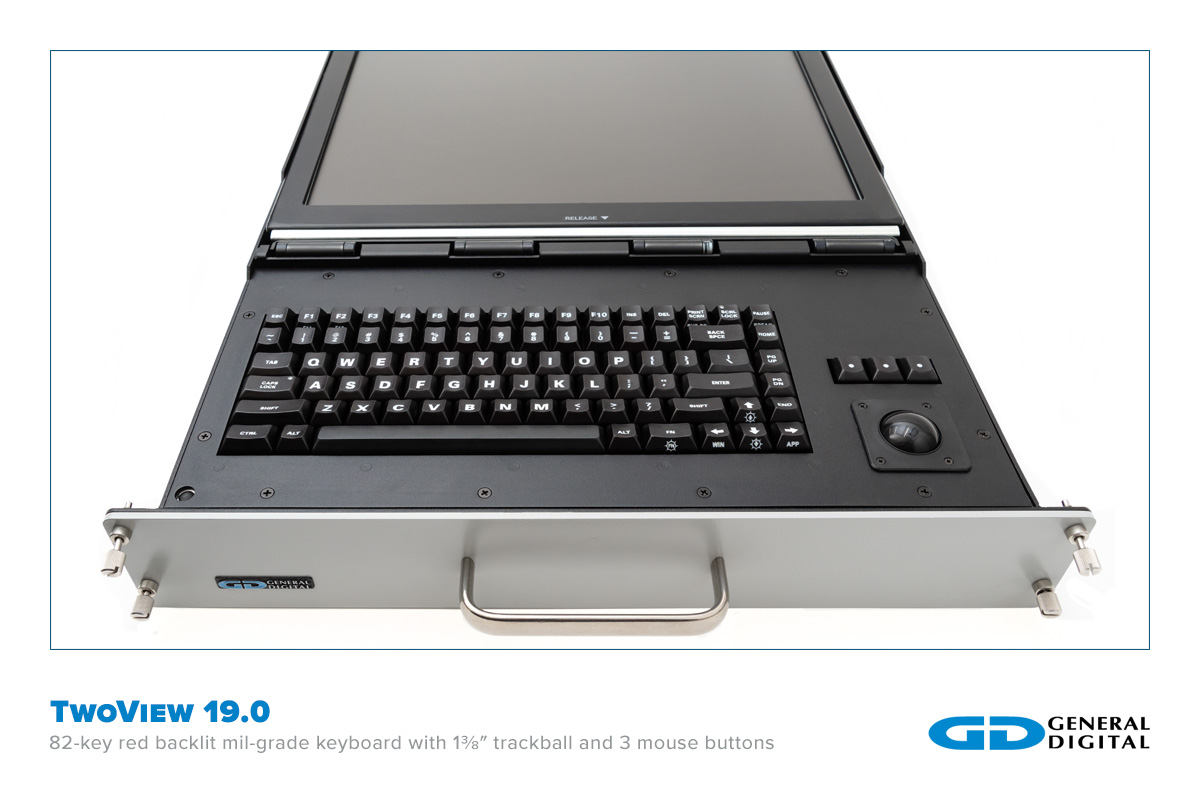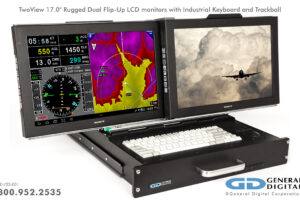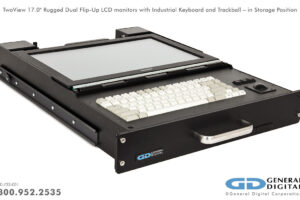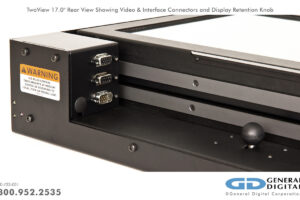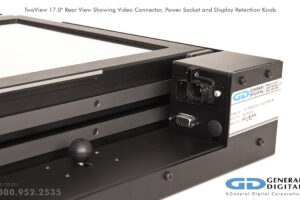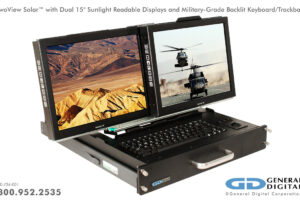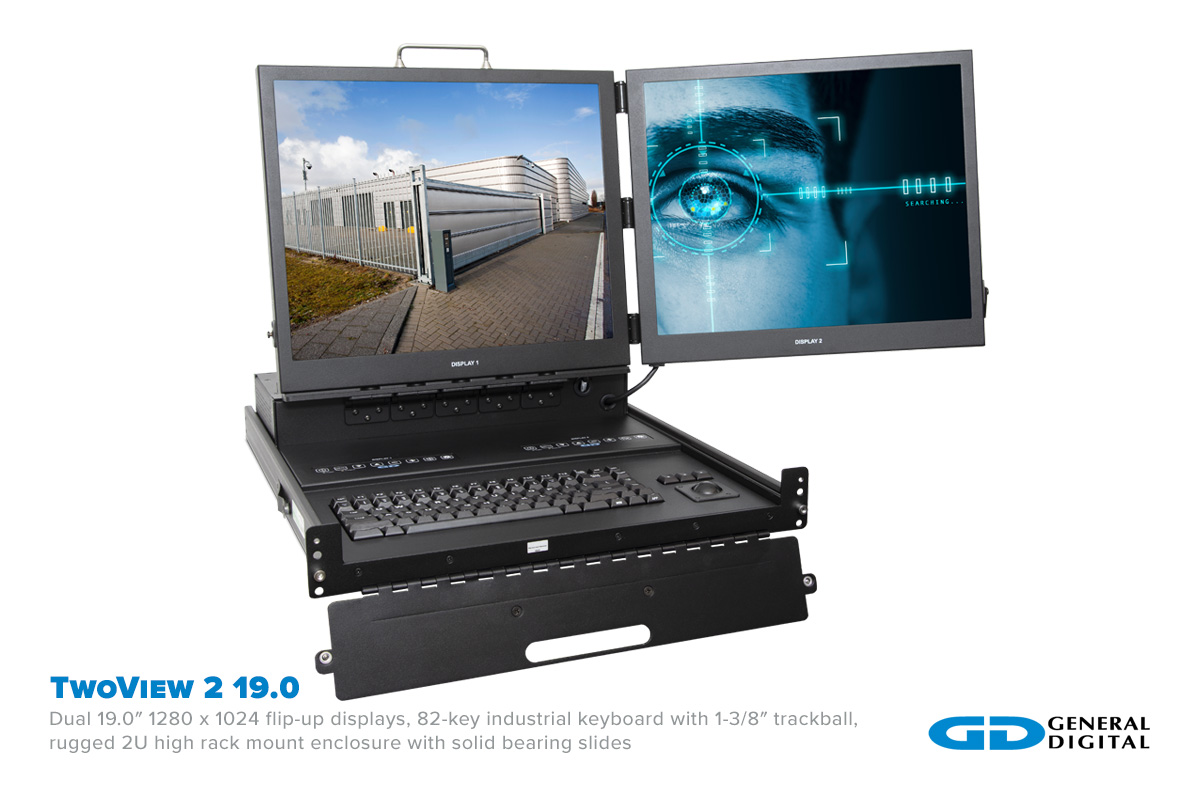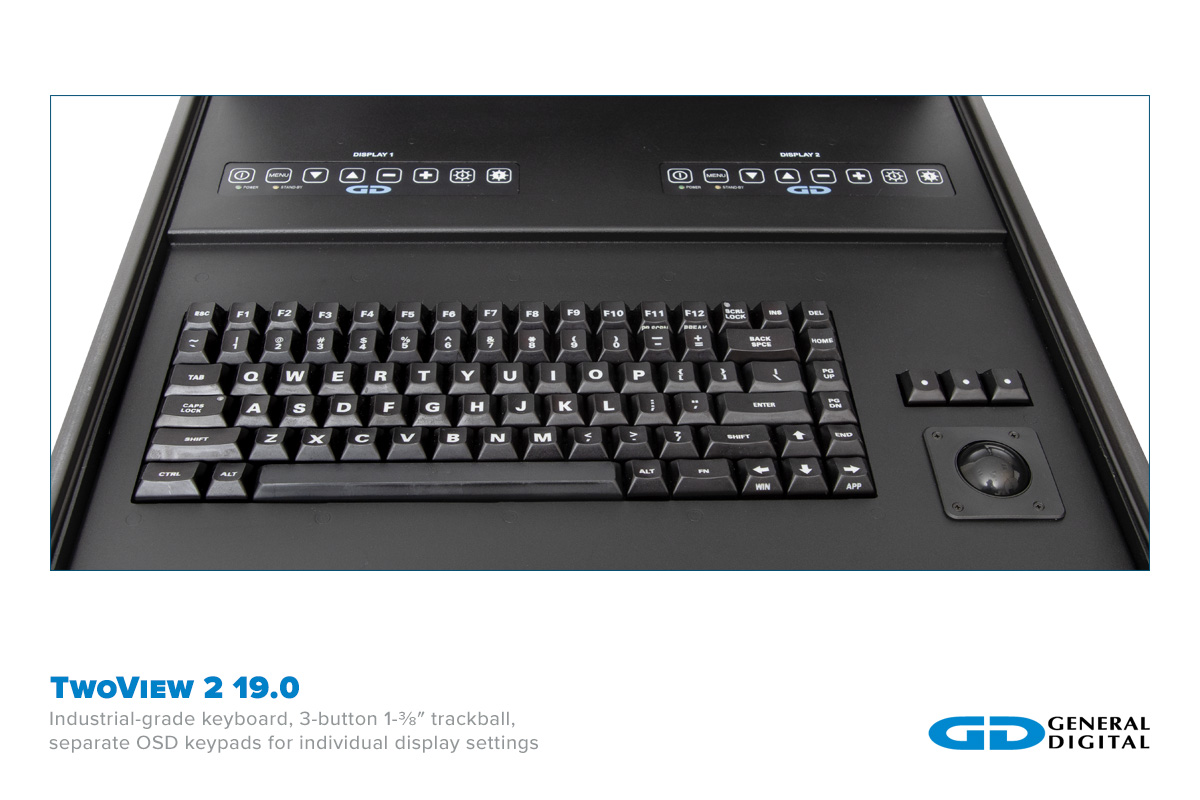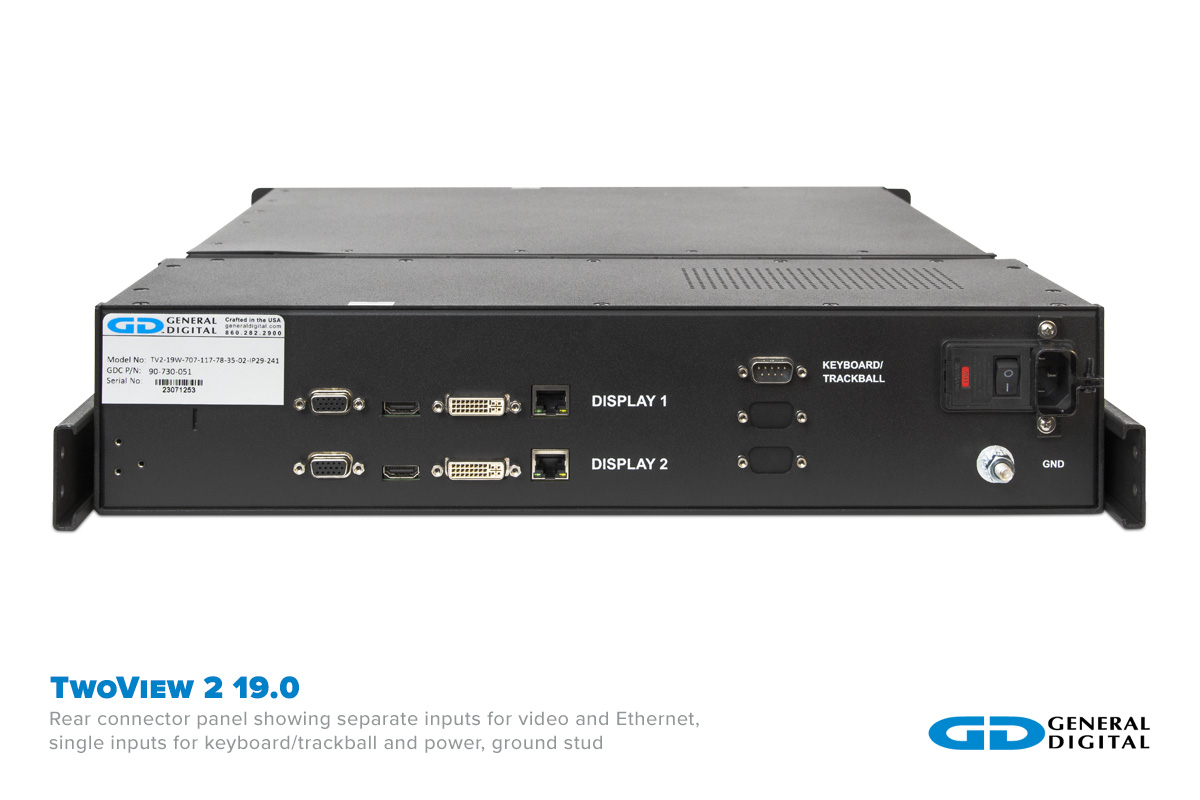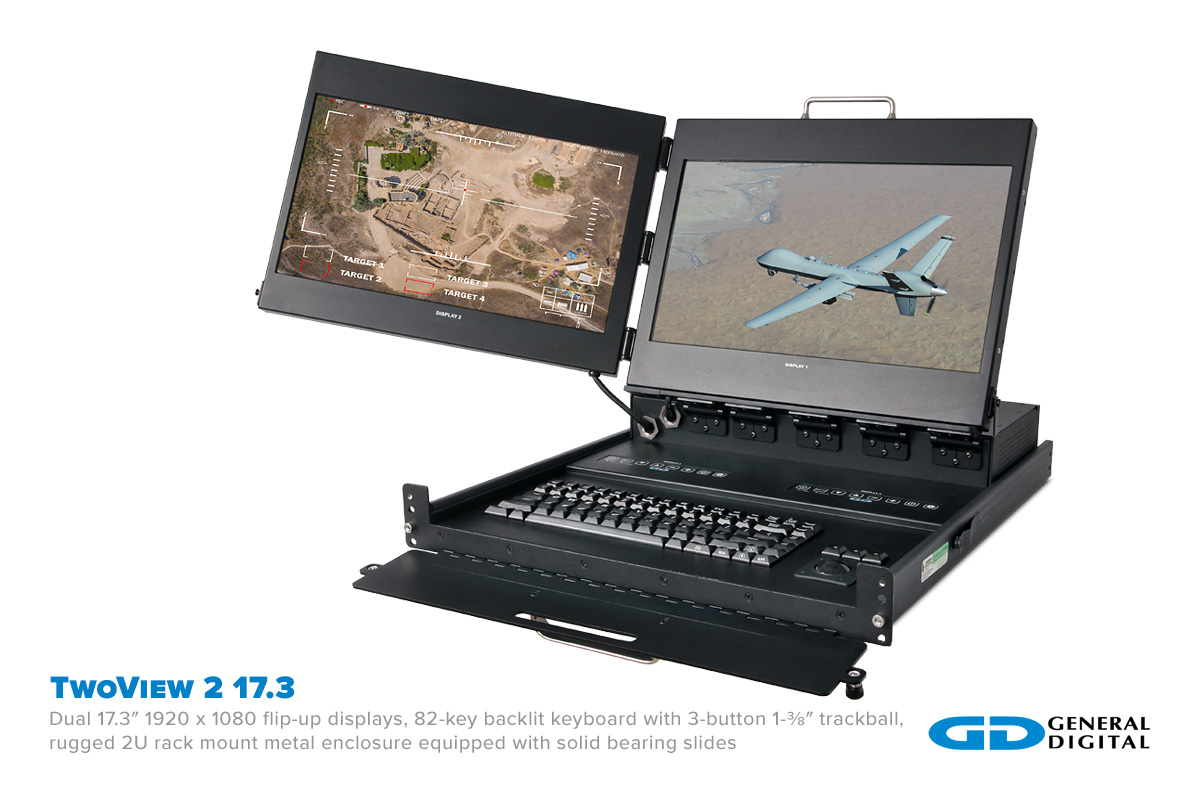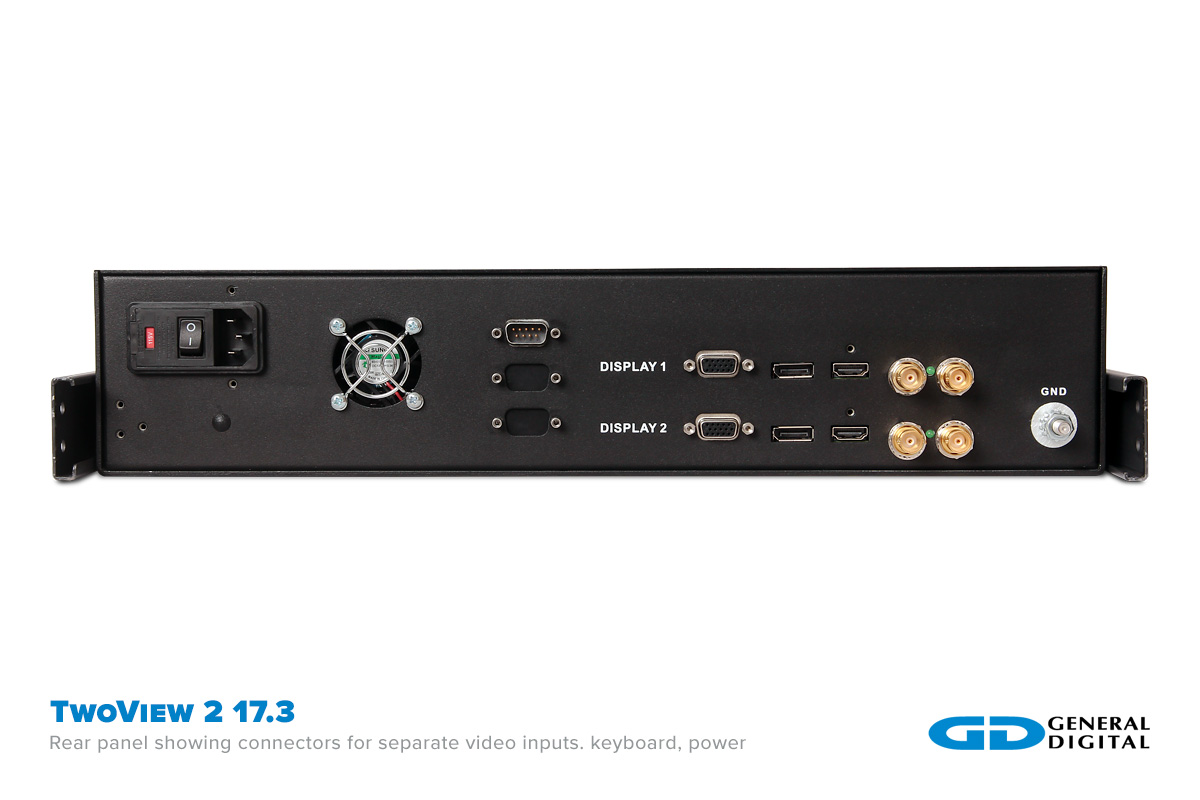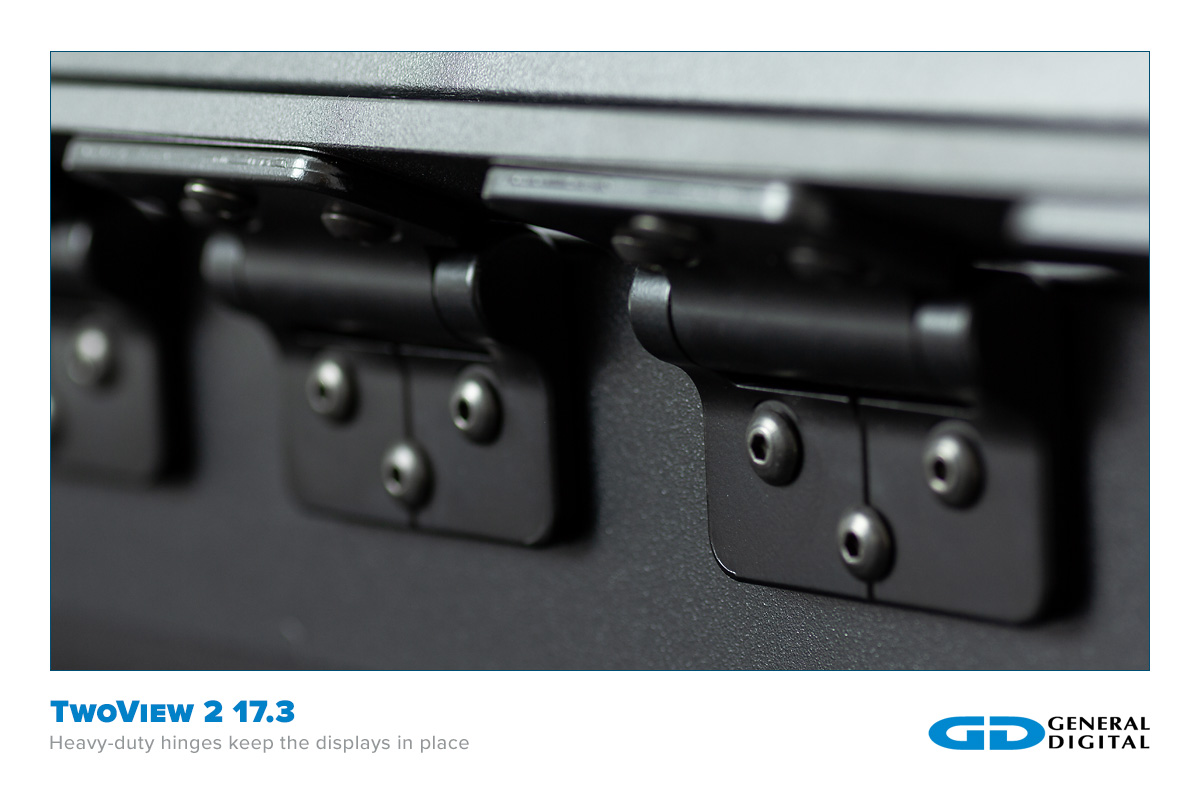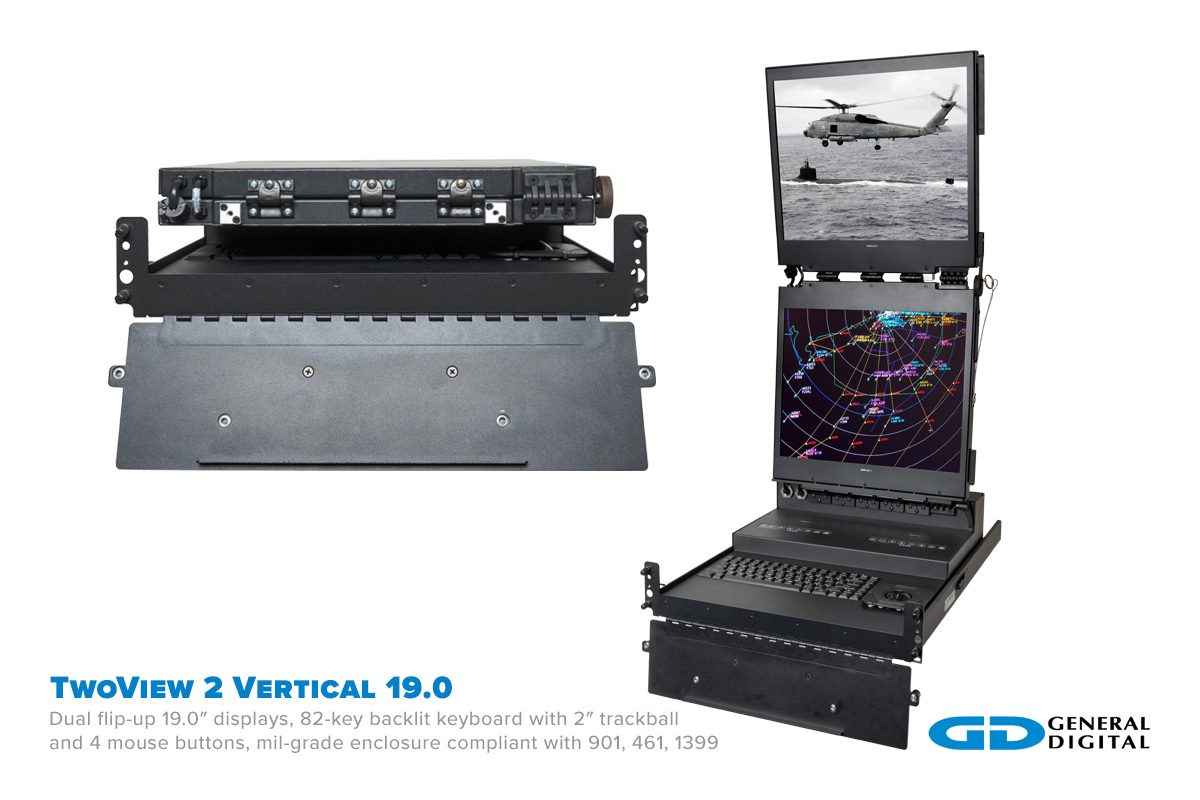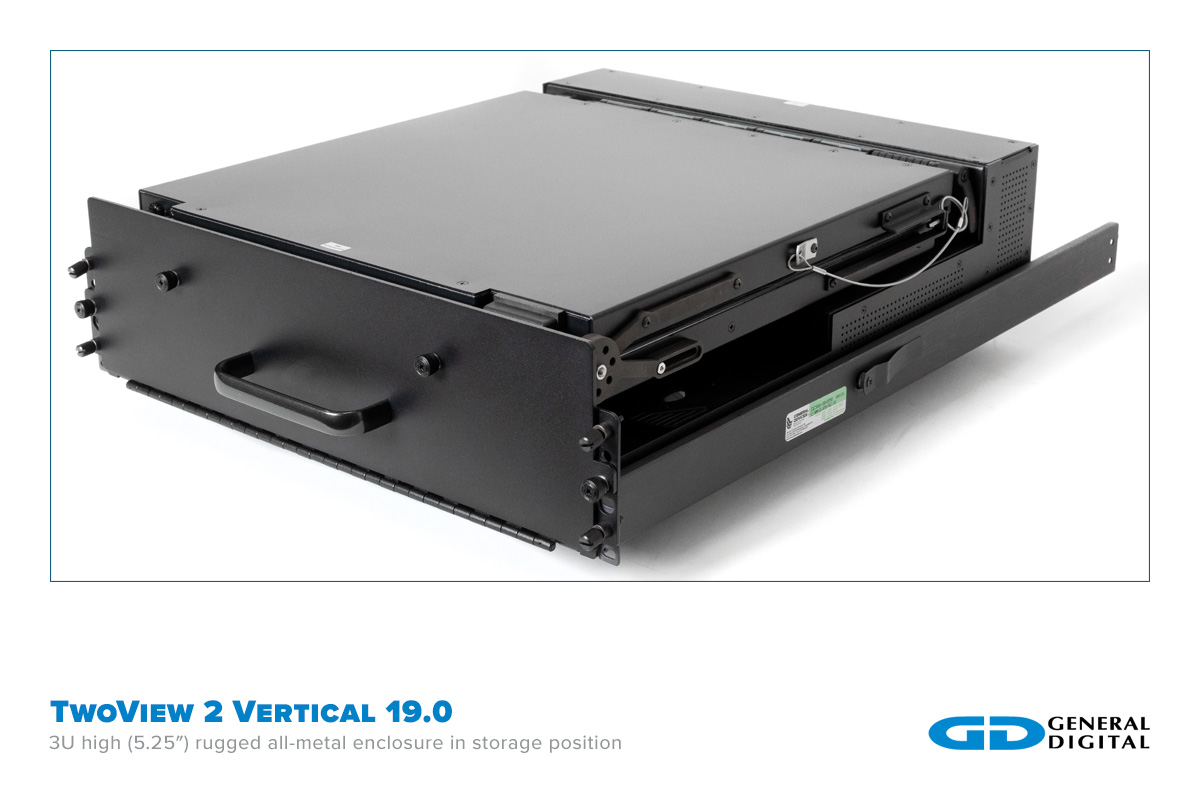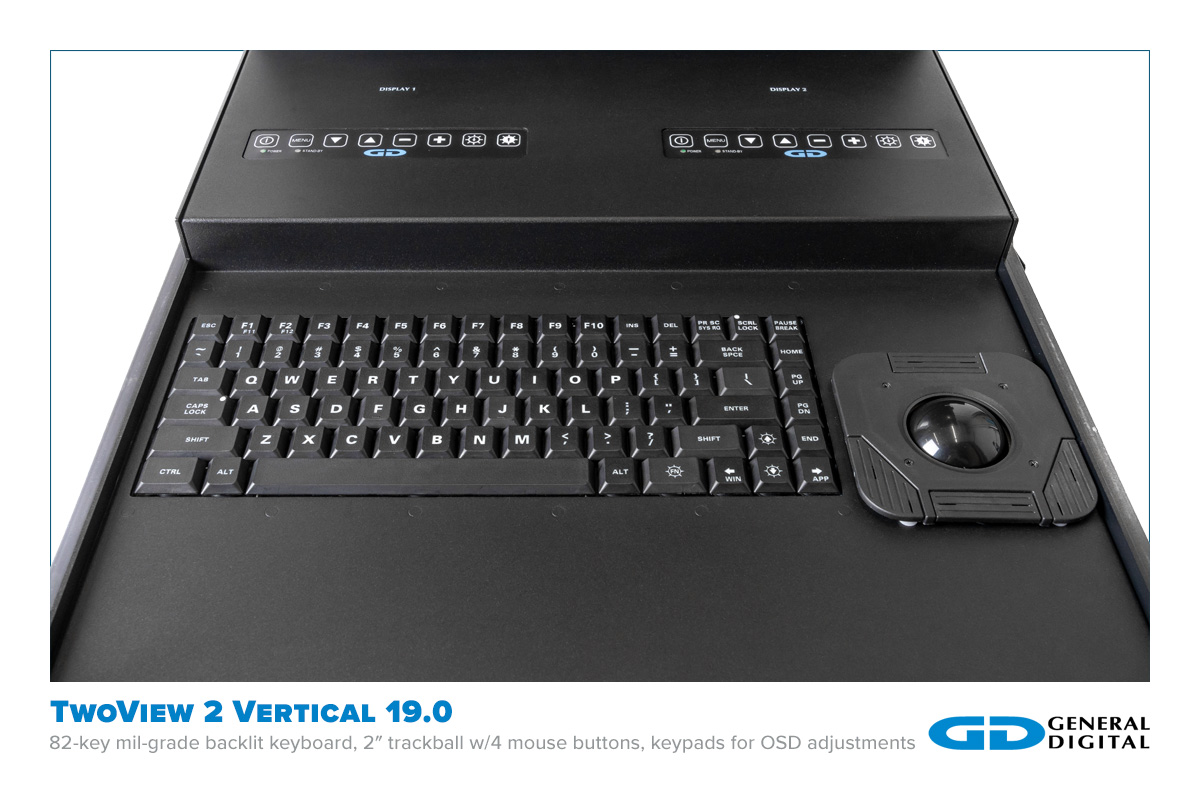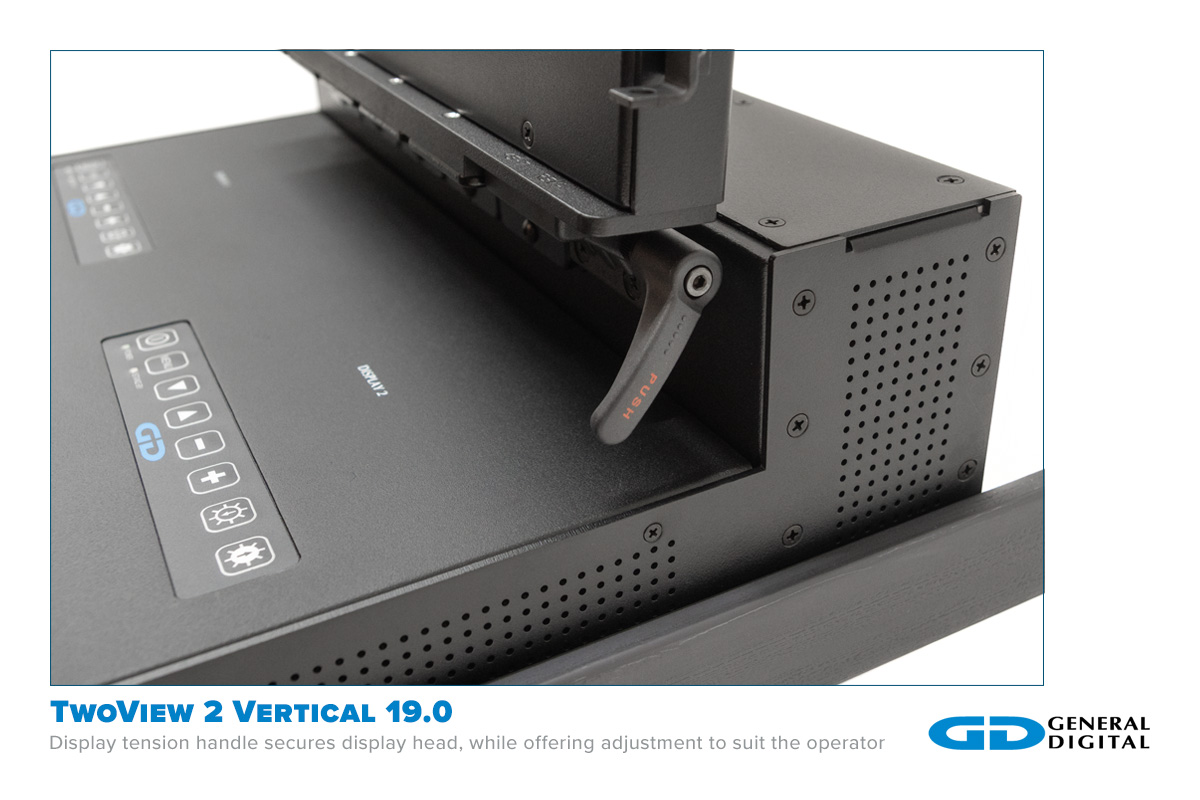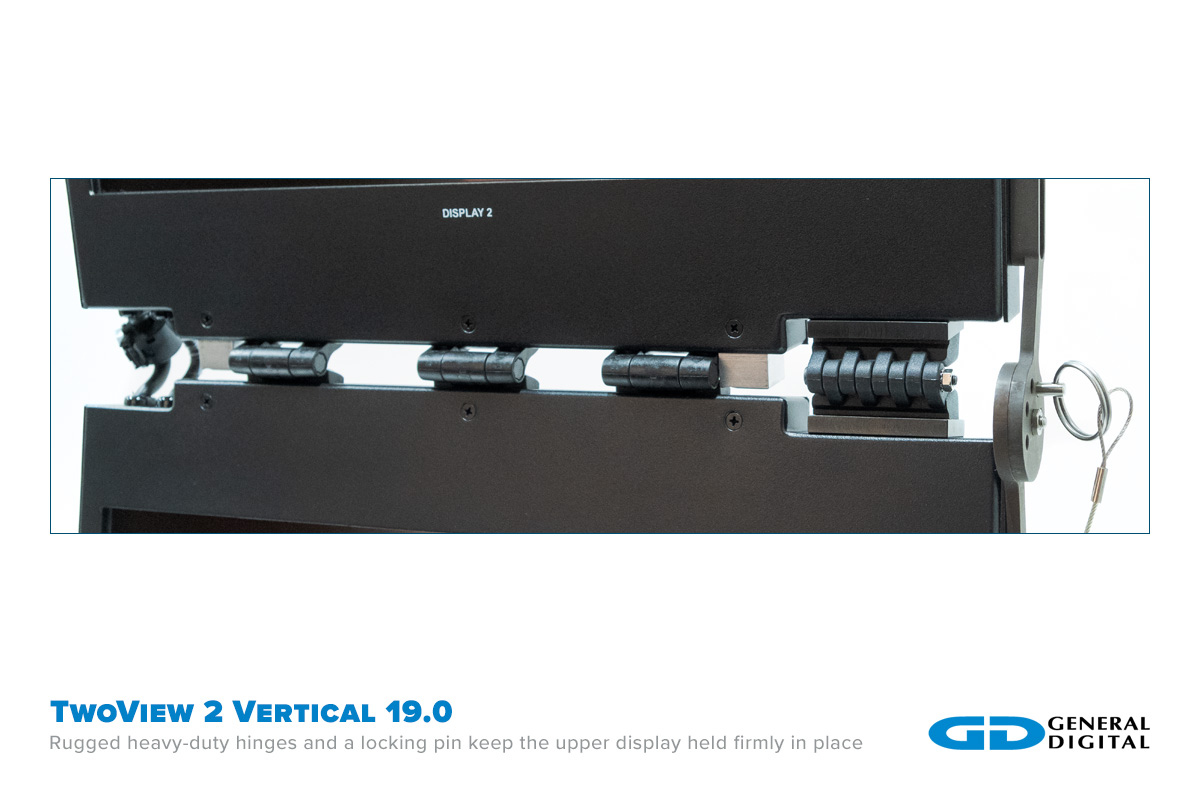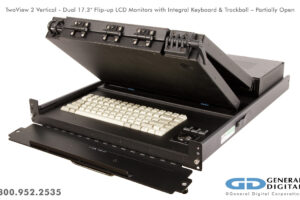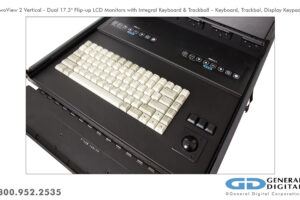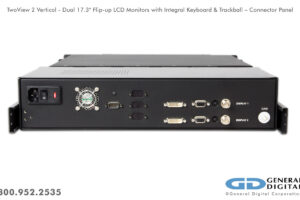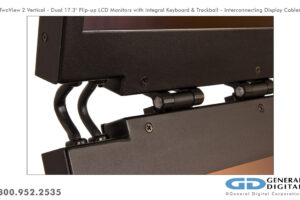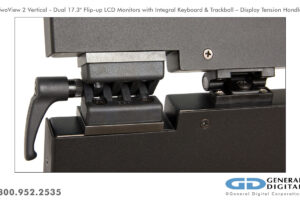Enclosure
The TwoView is designed to provide its operator with the maximum amount of visual information while occupying the smallest possible footprint within an EIA-310 or 19″ RETMA Rack Chassis. Constructed from a combination of aluminum and steel to provide a rugged, cost-effective and flexible design platform, this formidable display/keyboard/trackball is intended for use in industrial and military applications. The enclosures have an Iridite® coating (conductive anodized) to provide protection from corrosion and improve shielding properties where parts make contact with one another. All external surfaces are finished with a durable black powder coat paint, although custom colors are available upon request.
The TwoView is intended for harsh environments, such as extremes of temperature, humidity, shock and vibration. The TwoView 2 and TwoView 2 Vertical, in all their configurations, are well suited to industrial environments of less extreme conditions.
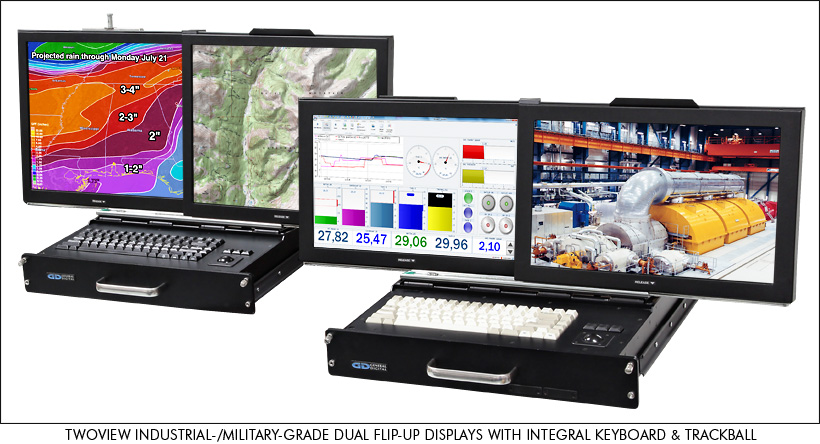
The low profile (2U or 3U) TwoView can be quickly deployed for operation from its storage position by sliding the drawer out from the rack chassis on its solid-bearing slides. The displays are then flipped up into viewing position on heavy-duty friction hinges and slid apart on ball-bearing slides. When not in use, the displays flip down into a secure storage position, and the entire unit slides into the rack, allowing more room in space-constrained environments.

The TwoView 2 is similar in operation, though the displays do not slide left and right. Instead, it is configured at our facility to have the secondary display flip to the left, right or above the primary display.

The TwoView 2 Vertical is designed to hinge open vertically for narrow-width environments.

Keyboard & Pointing Device
The keyboard and pointing device are located in front of the dual LCDs, providing optimal hand-eye distance. A vast assortment of commercial-, industrial[1]- and military[2]-grade keyboards are available for integration, with or without integrated pointing devices. Unpopulated space is intentionally left below the keyboard to allow additional customization with potential options such as multimedia drive, Smart Card reader, USB ports, pass-thru interfaces and more. Click on the Keyboard/Trackball Choices tab below for more information.
 [1] Spill/dust proof; typically comprised of steel switch chassis and hardware; Class 2 workmanship.
[2] Spill/dust proof; aluminum switch chassis; stainless hardware; Class 2 or higher workmanship; EMI filters; transient protection; keycap clips; shock sensing; lifetime warranty.
[1] Spill/dust proof; typically comprised of steel switch chassis and hardware; Class 2 workmanship.
[2] Spill/dust proof; aluminum switch chassis; stainless hardware; Class 2 or higher workmanship; EMI filters; transient protection; keycap clips; shock sensing; lifetime warranty.
Friction Hinges
The TwoView’s display heads are mounted to the main enclosure via three rugged continuous-friction hinges that enable the display to pivot from horizontal to vertical positions. A tubular shaft at the center of the hinge allows for cable routing, which improves shielding and minimizes cable chaffing.

The TwoView 2’s display head is mounted to the main enclosure via four continuous-friction hinges. The hinges allow the display head assemblies to be tilted more than 90°.
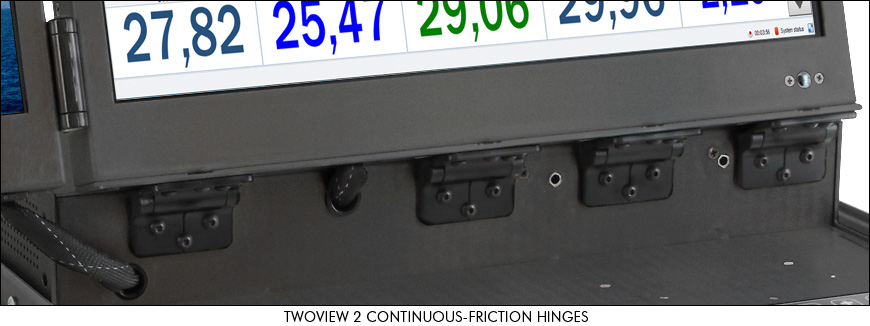
Slides
The TwoView and TwoView 2 monitor/keyboard devices mount to EIA-310 19″ RETMA racks via a pair of solid bearing slides. For special functionality, custom lengths can be supplied.
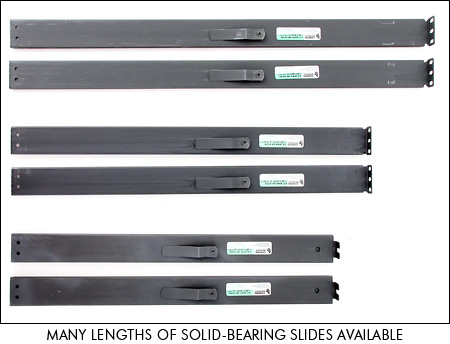
Additionally, your TwoView can be equipped with a Cable Management Guide to prevent tangling and chaffing of the cables supplying power, video, etc.
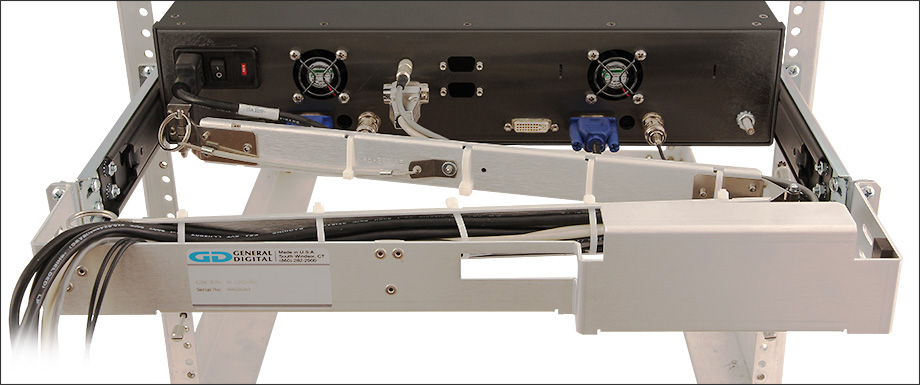
Connector Panels
All standard connections (keyboard, pointing device, power and video) are located on the rear connector panels. We use locking connectors wherever possible to ensure a secure and reliable connection.


Protective Glass/Overlay and Sealed Gasket
General Digital offers a variety of standard and custom gaskets to augment the performance of the TwoView Series:
- Watertight gaskets (e.g., closed cell, neoprene, rubber, single-sided adhesive, double-sided adhesive, O-ring) are installed between the LCD (or overlay) and the front bezel to prevent liquids from entering the enclosure through the display opening.
- Dust gaskets (e.g., open cell gaskets) are often supplied for monitors that do not require a liquid-tight seal between the display and/or overlay and the bezel, or for systems that use a touch technology (e.g., SAW) that are only compatible with certain gasket types.
- EMI/RFI gaskets reduce radiated and conducted emissions of the monitor.
- Desiccating gaskets can be used to prevent moisture/condensation from forming between the LCD and the overlay when exposed to high humidity.

Power Supply
Depending on the model, the TwoView operates from either an integrated AC switching power supply or +12 Vdc input. General Digital offers an assortment of complementary 1U rack-mounted AC switching power supplies or power supply “bricks” to accommodate your particular needs.

Video and Controls
General Digital offers a wide range of video controllers, allowing you to fine tune the display features and support to your specific video requirements.
We can reprogram the video controller firmware/BIOS to support a variety of video timings and specialty needs, such as STANAG 3350 A, B and C, RS-343 and RS-170. Most of our video controllers will also support interlaced and non-interlaced analog video (separate, composite and Sync-On-Green), and live video signals such as NTSC, PAL or SECAM.
Other input signals we support include ARGB (VGA) to DVI, HDMI, HD-SDI, SD-SDI, DisplayPort, 4K UHD and more.
Please consult a Sales Engineer to optimize your video controller selection.
OSD Controls
The TwoView monitor can be configured with a variety of standard or custom user controls, most often in the form of membrane or silicone keypads. Choices of LED and NVIS backlighting are available, as well as configuration with electronics that allow backlight dimming.
Much like your home TV, the On-Screen Display controls allow the user to adjust important display parameters, such as input signal, brightness, contrast, color temperature, sharpness, phase, scaling (aspect ratio), language and dozens of others.

Display Brightness and Night Vision Enhancements
General Digital can integrate virtually any LCD display size/resolution, from almost any panel manufacturer (OEM), into our enclosures. To assist in selecting the right panel for your application requirements, we have provided a list of commonly used or recommended panels for standard/low luminance, high brightness, sunlight readable and NVIS compatible needs.
New display models are constantly being introduced to the market by the LCD manufacturers, making it extremely difficult for us to maintain a comprehensive list. For this reason, we encourage you to speak with a Sales Engineer to share your price and performance objectives, so we can assist you in making the best display selection.
Standard Displays
General Digital has provided a sample listing of some common transmissive displays that are not sunlight readable. Typically, these displays are suitable for applications that are not going to require specialty functionality, such as sunlight readability or NVIS compatibility, and for customers with cost-sensitive budgets.
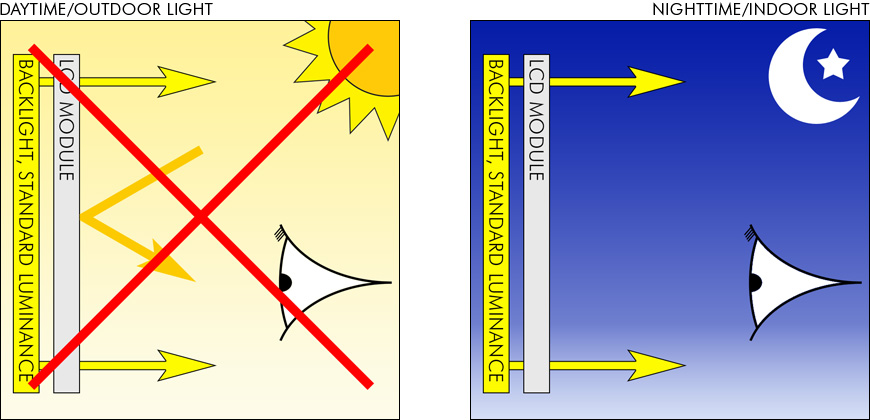
LCD backlight produces sufficient luminance for use in office, shaded and low ambient/darkness light levels. However, luminance is insufficient to overcome reflected light for use in direct sunlight.
Transmissive-Enhanced View Displays
This type of technology boosts the efficiency of the backlight’s light utilization and minimizes surface reflection of ambient light. It is a transmissive LCD module that produces high contrast images, even in bright outdoor light and direct sunlight. These displays feature a wider color reproduction range than reflective LCDs. Featuring an LED backlight, these displays consume very little power and produce very little heat, making them ideal for integration into fully sealed enclosures, which are devoid of ventilation holes and cooling fans to dissipate heat. They also provide the additional benefit of a wide operating/storage temperature (as great as -30°–85° C), so that they can endure exposure to greater internal ambient temperatures.
As a design note, we have found that these panels work best when coupled with an overlay that has an antireflective (AR) coating. Overlays that inhibit transmissivity (e.g., resistive touch screen) or have antiglare (AG) coatings will significantly reduce the panel’s performance in high ambient lighting conditions. Since transmissive displays produce greater brightness from their LED backlights than traditional transflective displays, they are regarded as a better outdoor solution, as they can generate high contrast in total darkness, in direct sunlight or on a cloudy/hazy afternoon.
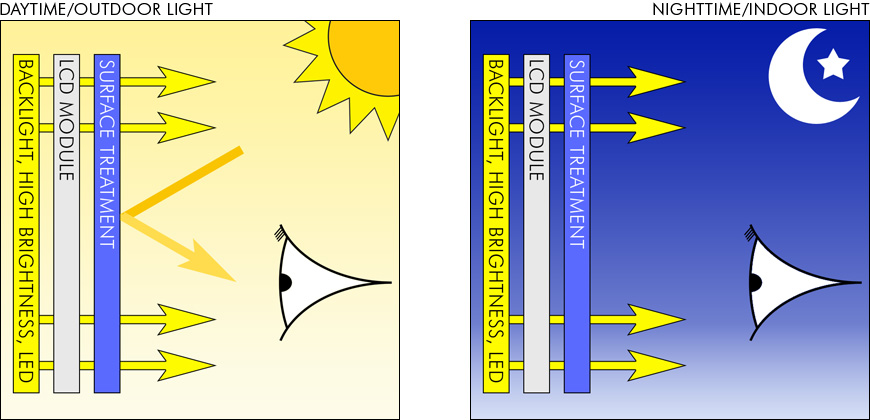
T-EVT technology uses the high brightness/efficiency LED backlight as a light source while minimizing the surface reflection of ambient light. The result is an LCD that produces high contrast images even in bright outdoor light or direct sunlight.
GenFlective™/Transflective Displays
This type of panel incorporates a highly reflective backlight that reflects the ambient lighting back out of the display to enhance its native brightness produced by its active backlight. Like the Transmissive-Enhanced View Displays, GenFlective panels work best when coupled with an AR-coated overlay. They are least effective with overlays that retard the light transmission (e.g., resistive touch sensors) or have a matte finish.

T-EVT technology uses the high brightness/efficiency LED backlight as a light source while minimizing the surface reflection of ambient light. The result is an LCD that produces high contrast images even in bright outdoor light or direct sunlight.
Sunlight Readable/NVIS Compatible Displays
These displays feature a value-add backlight, typically made from high efficiency LEDs. These displays produce significant active luminance. Often, the peak luminance is limited by internal ambient temperature constraints or must be connected to an intelligent backlight controller and thermal sensor that will automatically reduce brightness/power to avoid over-temperature conditions or thermal shutdown. The high luminance output makes them ideal for use with a wide variety of overlays such as touch sensors, EMI filters, heaters, etc.
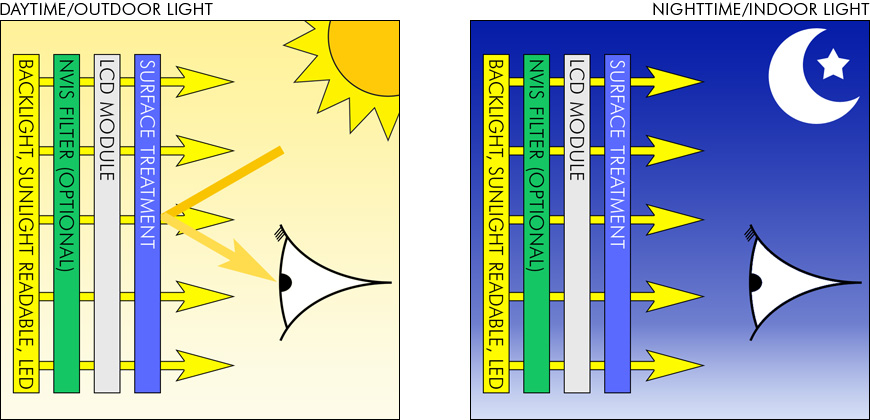
Sunlight readable displays use a General Digital-enhanced, highly efficient, super bright/sunlight readable LED backlight to provide maximum functional brightness. The addition of surface treatments such as antireflective coatings and optical bonding reduce surface reflections and increase contrast so displays can be used in direct sunlight.
If our stock offering does not suit your needs in terms of size, fit or function, please contact a Sales Engineer and we will work with you to configure a system to your specifications. Customers can also request that we integrate one of our many LED-based sunlight readable, NVIS or sunlight readable/NVIS enhanced displays into their product. These solutions provide many advantages, such as increased longevity, improved durability, higher brightness, lower power consumption and/or NVIS compatibility.



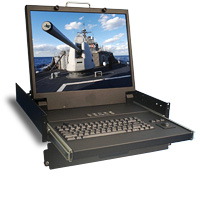

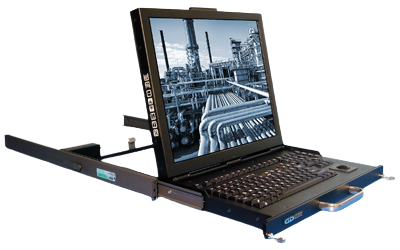 Since its release in 2001, General Digital’s SlimLine 1U was designed in-house to meet the physical, mechanical and environmental rigors of military and industrial environments.
Since its release in 2001, General Digital’s SlimLine 1U was designed in-house to meet the physical, mechanical and environmental rigors of military and industrial environments.